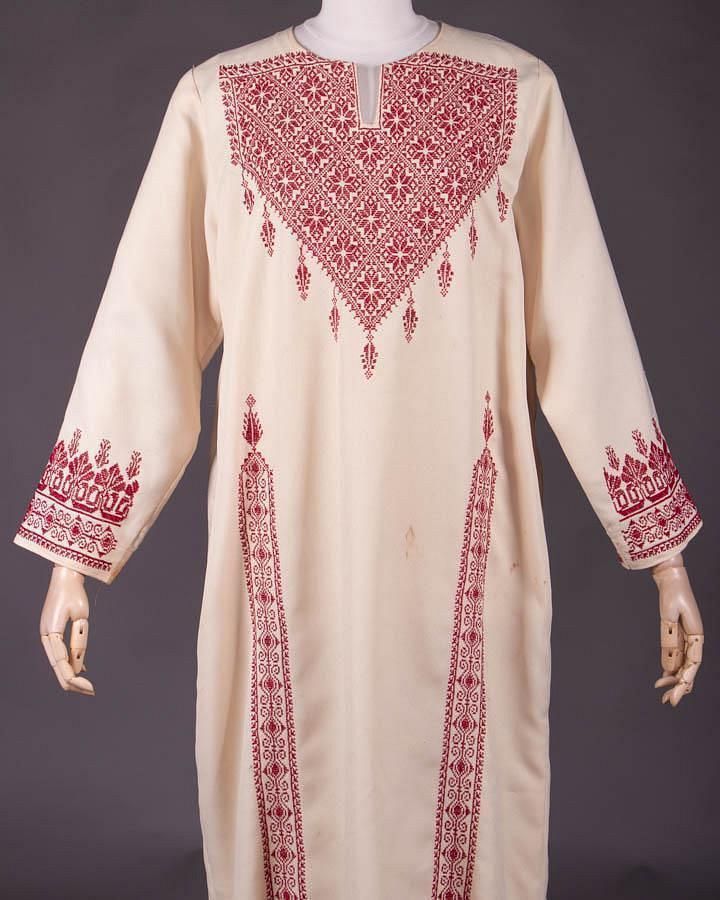Name/Title
Four Branch Dress, (Early 21st Century)Entry/Object ID
2024.11.7Tags
Pop-up ExhibitionDescription
After 1948, we began to see a transformation in the use and style of embroidery, تطري [tatriz]. Due to al-Nakba, over 700,000 displaced refugees no longer had access to embroidery supplies, weaving centers and Syrian imported fabrics, let alone their livelihoods and income. Palestinian society was devastated, and the 1950’s was a period of great upheaval for families who had newly become refugees. Therefore, little documentation is available about Palestinian costume during this time.
During the late 1960s, Palestinians revived the "six branch dress" style, named after the six vertical bands of embroidery that ran from waist to hem. Some of the dresses were four branches, and their names changed to "four branch" dress. This style of dress had been practiced prior to 1948 using traditional motifs that represented village styles. However, its reemergence during the mid-twentieth century showcased curvilinear motifs or branches of birds, as shown in this dress. In its widespread popularity during the 1960s, this dress became the first post-1948 style to evolve without being tied to an established regional style. The patterns in the “branches” were primarily European, however the style grew over the decades to include more traditional motifs. The beauty of the "six branch dress" was that the design structure allowed one to embroider the "branches" to reflect one's own economic necessities: very thin if times were hard, broadening the panels as small luxuries became possible.
